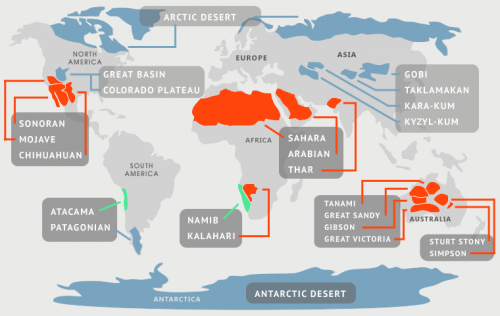Sitting here in Denali, enjoying hot showers and laundry, I am anxious for my time in the field. I am not anxious for the work, rather I am anxious about the water. Toolik has strict restrictions in place. I am allotted two, two-minute showers a week, and one load of laundry every two weeks. With this in mind, I chopped 12 inches of my hair before I left (I donated to Wigs for Kids) and have a limited amount of clothing options (this was also done because of space and travel constraints). Listening to my laundry slosh in the machine, letting my wet clean hair dry naturally in the warmth of the sunshine streaming in the kitchen window, I wonder why Toolik has such water constraints. I really know the answer –the Arctic Region is considered a cold desert.
I currently live in Tucson, Arizona, in the heart of the Sonoran Desert. I practice and teach about water conservation. I live in a desert environment and welcome our bi-yearly monsoon storms with enthusiasm. In Tucson, water conservation is, for now, done purely by the individual. We have no restrictions in place. Large golf courses and schools are now using reclaimed water to water their fields and grass, but other than grass roots efforts, water harvesting and conservation are left up to the individual.
So how is the Arctic a desert environment? How can Denali in the subarctic be considered one too? Close your eyes and imagine Denali or the Arctic in the winter. What do you see? If you see inches upon inches of snow for Denali, you are correct. However, the snow is dry, not wet snow (ideal for snowball fights). Here the average is 10 inches of snow, which would equate to 1 inch of rain – so even though there is a lot of it, it doesn't all seep into the ground as moisture.
Now close your eyes and imagine a desert. Do you see sand dunes and feel hot? Is your desert barren of life? In some cases, like the Sahara, that is accurate. My desert, the Sonoran, is brimming with life adapted to the climate, the high temperatures and low precipitation. The Arctic is the same way. It also is brimming with life – hearty plants and animals that have adapted to living in some of the world's harshest conditions.
As a cold desert, the Arctic region receives less than 10 inches of precipitation a year, roughly the same as the Sahara. The Arctic region is surrounded by water, so it is hard to imagine it being a desert, however, the temperature of the water is so low that the water is always frozen (although we are seeing a shift in this as temperatures rise.) The precipitation that does happen in the Arctic takes the form of snowfall and slight drizzling rains, which usually occurs in the summer warmer months. The winter is dark with six months of sunless days and temperatures way, way, way below zero.
I've been asked what I have done to prepare for my time in the Arctic region. Besides cutting my hair, experimenting with dry shampoos, and rotating my clothing supply so items can be worn multiple times without washing, I have also taken a course on the Arctic through Coursera, a free online learning platform. Through my time in Alaska acclimating to the continuous daylight and drop in temperature (highs in the 50's) since leaving Tucson at 112 degrees, and these courses, I have gained a whole new level of appreciation for the Arctic Region and what makes it so special and truly unique.
And while I can, I am enjoying hot showers and clean clothes...



Comments